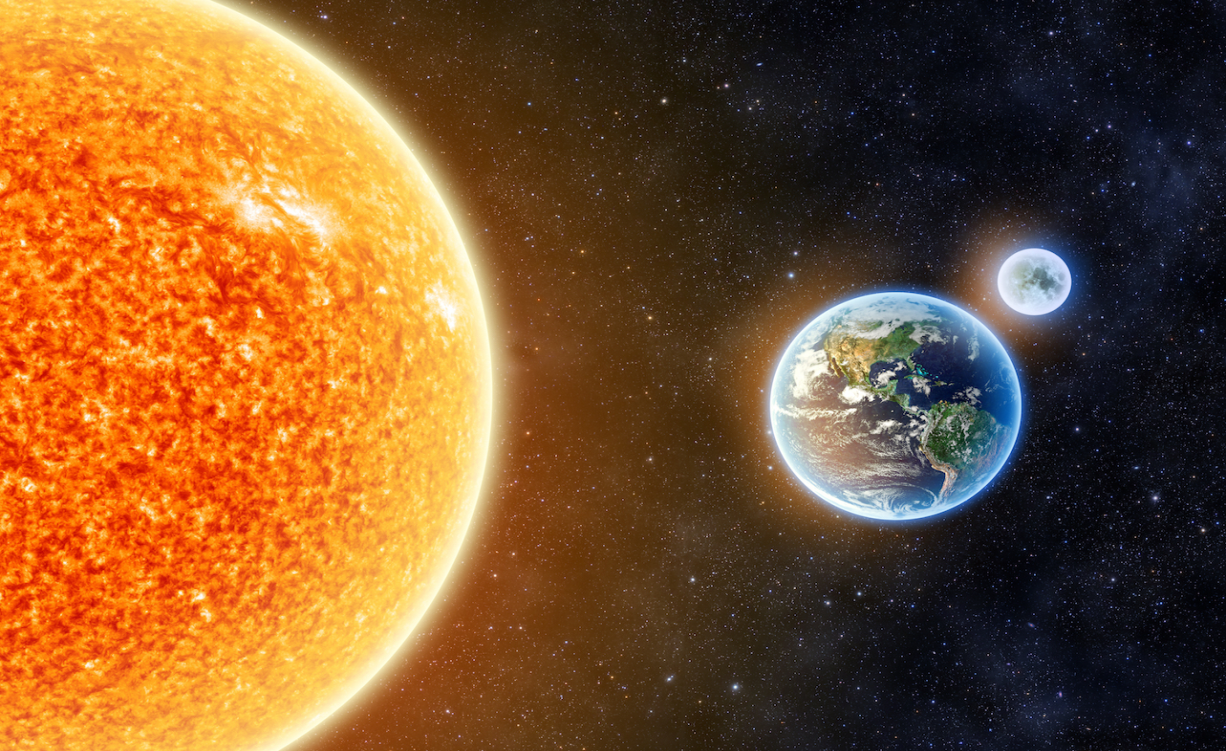Description

Copyright infringement not intended
Picture Courtesy: https://www.earth.com/news/solar-geoengineering-climate-change/
Context: The Sun influences Earth's climate, but its brightness varies in an 11-year cycle, contributing to a minor warming of 0.1°C since the 1800s.
KeyHighlights
- The Sun is the primary source of energy for Earth, impacting biological and physical processes such as the water cycle, plant growth, and weather systems.
- The Sun undergoes an 11-year cycle of high and low activity, marked by changes in brightness, solar radiation levels, sunspots, and solar flares.
- Historical data suggests a small increase in sunlight reaching Earth between the late 1800s and mid-1900s, contributing to a fraction of observed warming.
- Over the past five decades, despite Earth's temperature rising significantly, the Sun's energy output has only varied by 0.1%, as reported by NASA in 2019. This minimal change is insufficient to account for the observed global warming.
- If the Sun were the primary driver of warming, all layers of Earth's atmosphere would be warming. However, observations show that while the lower atmosphere warms, the upper atmosphere cools, indicating a different cause—consistent with the effects of greenhouse gas-induced warming.

Sun’s Impact on Climate Change
- The Sun plays a crucial role in influencing Earth's climate, but it's important to note that the primary driver of recent climate change is human activities, particularly the increase in greenhouse gas emissions. While variations in solar radiation can contribute to climate fluctuations, they are not the main cause of the recent global warming observed on Earth.
Solar Radiation
- The Sun emits energy across the electromagnetic spectrum, with the majority falling within the visible light range. This energy is vital for sustaining life on Earth.
- Solar radiation interacts with Earth's atmosphere, where some of it is absorbed and re-radiated as infrared radiation.
Solar Variability and Cycles
- The Sun undergoes natural cycles of variability, such as the 11-year solar cycle. This cycle is characterized by changes in solar activity, including the number of sunspots.
- Sunspots are areas on the Sun's surface with intense magnetic activity. The number of sunspots varies, reaching a maximum (solar maximum) and minimum (solar minimum) approximately every 11 years.
Solar Irradiance
- Solar irradiance is the amount of solar radiation received per unit area at Earth's surface. Variations in solar irradiance are relatively small, with about a 0.1% change over the solar cycle.
- While changes in solar irradiance do impact climate, their influence is much smaller compared to other factors, such as greenhouse gas concentrations.
Sunspot Activity and Climate Correlations
- Some studies have explored potential correlations between periods of low sunspot activity (solar minima) and cooler temperatures on Earth. However, the observed correlations are weak, and the magnitude of the cooling effect associated with solar variability is insufficient to explain the warming trend observed over the last century.
Greenhouse Gas Effect
- Human activities, particularly the burning of fossil fuels (coal, oil, and natural gas), have significantly increased the concentrations of greenhouse gases in the atmosphere.
- Carbon dioxide (CO2), methane (CH4), nitrous oxide (N2O), and other greenhouse gases trap outgoing infrared radiation, preventing it from escaping into space. This trapped energy warms the Earth's surface.
Anthropogenic Climate Change
- The Intergovernmental Panel on Climate Change (IPCC) has provided comprehensive assessments of climate change science. Their reports emphasize the dominant role of human activities in driving the observed warming trend.
- The burning of fossil fuels releases CO2 and other greenhouse gases, contributing to the enhanced greenhouse effect.
Global Warming Evidence
- Multiple lines of evidence support the conclusion that the Earth is undergoing significant warming. Surface temperature records, satellite observations, and other data consistently show a warming trend.
- Melting ice caps and glaciers, rising sea levels, and shifts in ecosystems further validate the impact of global warming.
Mitigation and Adaptation Strategies
- Mitigation involves efforts to reduce or prevent the emission of greenhouse gases. This includes transitioning to renewable energy sources, improving energy efficiency, and implementing carbon capture technologies.
- Adaptation focuses on preparing for and responding to the impacts of climate change. This may involve changes in land use planning, infrastructure design, and the development of resilient ecosystems.

Conclusion
- While the Sun's variability does influence Earth's climate, the primary driver of recent and rapid climate change is human-induced, specifically the increased concentration of greenhouse gases. Understanding the complex interplay of these factors is crucial for developing effective strategies to address and adapt to the challenges posed by climate change.
|
PRACTICE QUESTION
Q. Developed nations are historically responsible for the majority of greenhouse gas emissions, yet developing nations often face the brunt of climate impacts. How to ensure a just and equitable global response to climate change that addresses historical responsibility and prioritizes the needs of the most vulnerable populations?
|
















